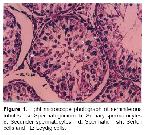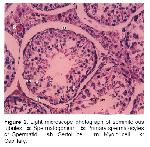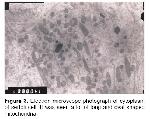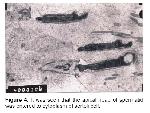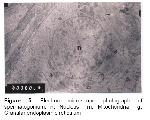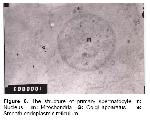It has been reported that the interstitial distance between seminiferi contorti was quite large in the adult rabbits
9 and in the adult squirrels
12. In the present study, interstitial distance was narrow.
The diameter of tubulus seminiferus contortus was notified as 186 μm
13 and 181.5 μm
11 for the adult dogs. This was found as 437 μm for badger in this study.
There were different findings about the shape of sertoli cells as pyramid 14, columnar 3 and irregular 11. In this study, the shape of sertoli cells was determined as triangular in badgers.
The present study showed that there was a lot of oval and long mitochondria in the cytoplasm of sertoli cells in the adult badgers. Similar results have been reported for human 3, 15 and water buffalo 16.
Leydig cells were found singly or colony of various sized cells with large and vesicular single nucleus in human (
). Leydig cells were defined as pyramidal shaped and colonized with various size around blood vessel in the adult rabbits 9. In rats, leydig cells were defined as irregular polygonal shaped with eosinophylic cytoplasm and large nucleus without chromatin 6, 7. In this study, leydig cells were determined as generally single or rarely grouped with eosinophylic cytoplasm and large nucleus in the adult badgers.
It was reported that nuclei of leydig cells situated exantricallly in rats 6. We also found an eccentric nucleus in leydig cells of the adult badger.
It was reported that pig, horse and opossum have more leydig cells that occupied nearly all intertubular space 3. In this study, it was observed that leydig cells were present in intertubular areas as single or small groups in badgers.
Ross et al 15 and Leeson et al 14 reported that myoid cells composed a single layer in rodentia. However, peritubular tissue was formed by 3-5 myoid cells layer in human. Prakash et al 17 presented that myoid cells were mostly two to three layered in bonnet monkey. In the present study, it was observed that myoid cells composed only a single layer in badgers.
Jurado et al 18 found that apical head of spermatid was inserted in the cytoplasm of sertoli cell. We also determined similar result in badger.
In conclusion, light and electron microscopy examinations results of this study showed that the structure of badger's testis has many similarities with that of the other mammalian.



